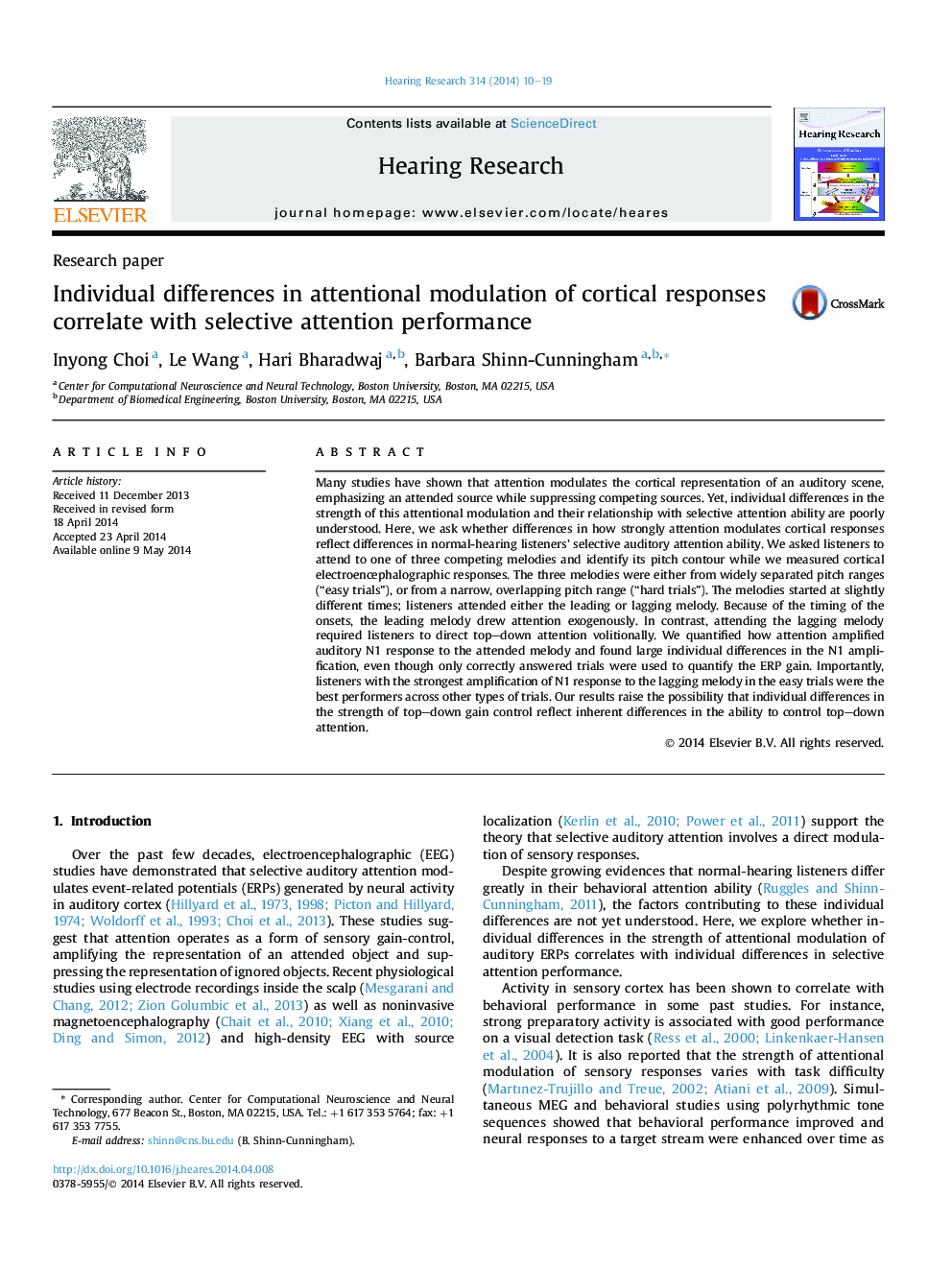| Article ID | Journal | Published Year | Pages | File Type |
|---|---|---|---|---|
| 4355120 | Hearing Research | 2014 | 10 Pages |
•Subjects exhibited large variability in a selective auditory attention task.•Cortical ERPs associated with attended sources were amplified during the task.•Top–down amplification of attended-source ERPs varied across subjects.•Task performance correlated with the strength of top–down cortical modulation.•Failure to inhibit responses on control trials accounted for additional variability.
Many studies have shown that attention modulates the cortical representation of an auditory scene, emphasizing an attended source while suppressing competing sources. Yet, individual differences in the strength of this attentional modulation and their relationship with selective attention ability are poorly understood. Here, we ask whether differences in how strongly attention modulates cortical responses reflect differences in normal-hearing listeners' selective auditory attention ability. We asked listeners to attend to one of three competing melodies and identify its pitch contour while we measured cortical electroencephalographic responses. The three melodies were either from widely separated pitch ranges (“easy trials”), or from a narrow, overlapping pitch range (“hard trials”). The melodies started at slightly different times; listeners attended either the leading or lagging melody. Because of the timing of the onsets, the leading melody drew attention exogenously. In contrast, attending the lagging melody required listeners to direct top–down attention volitionally. We quantified how attention amplified auditory N1 response to the attended melody and found large individual differences in the N1 amplification, even though only correctly answered trials were used to quantify the ERP gain. Importantly, listeners with the strongest amplification of N1 response to the lagging melody in the easy trials were the best performers across other types of trials. Our results raise the possibility that individual differences in the strength of top–down gain control reflect inherent differences in the ability to control top–down attention.
